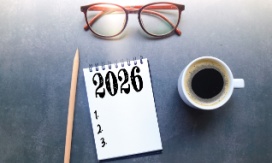Upcoming Webinars
Access the latest trends and insights shaping the profession—free for members.
Share your Expertise In Person or Virtually.
Register early—members get 20% off when enrolling 60+ days before courses start.
Charting Your Course to Success
From foundational knowledge to advanced leadership skills, NIGP offers a wealth of tools and resources to help you navigate your professional journey and achieve your leadership goals.
Your step-by-step guide to a successful career in public procurement.
Register early—members get 20% off when enrolling 60+ days before courses start.
All the tools to help you successfully prepare for certification.
Opens January 5.
Start your job search in the field of Public Procurement.
Join a network of thousands of professionals working in the field of Public Procurement.
As volunteers serve the Institute, the Institute serves the profession, and the profession serves society.
Each year, NIGP recognizes members who have achieved hallmark status in the eyes of their peers.
Access to Our Exclusive Audience of Procurement Officials
19,000+ public procurement professionals, over 2,400 agencies, and 65 regional chapters across North America
Share your Expertise In Person or Virtually.

Register early—members get 20% off when enrolling 60+ days before courses start.
.jpg)
Charting Your Course to Success
From foundational knowledge to advanced leadership skills, NIGP offers a wealth of tools and resources to help you navigate your professional journey and achieve your leadership goals.

Your step-by-step guide to a successful career in public procurement.
.jpg)
Register early—members get 20% off when enrolling 60+ days before courses start.

All the tools to help you successfully prepare for certification.

Opens January 5.

Start your job search in the field of Public Procurement.

Join a network of thousands of professionals working in the field of Public Procurement.
.jpg)
As volunteers serve the Institute, the Institute serves the profession, and the profession serves society.

Each year, NIGP recognizes members who have achieved hallmark status in the eyes of their peers.
Access to Our Exclusive Audience of Procurement Officials
19,000+ public procurement professionals, over 2,400 agencies, and 65 regional chapters across North America

Todd Slater
Recently, I came across an article that gave me pause—and ultimately, a renewed sense of urgency. "The Future of Work is Ageless" by Ivett Casanova and Tonya Wilson, published in the June 2025 issue of TD Magazine, explores how deeply ingrained age bias is in our workplaces, often without us even realizing it.
As someone who works closely with professionals across every stage of their career in public procurement, this topic hit home. We talk a lot about talent pipelines, professional development, and workforce planning—but how often do we talk about age as a dimension of inclusion? More importantly, how often do we unintentionally let age-related assumptions shape decisions?
The conversation around ageism is long overdue, and it's one we need to bring to the forefront of our leadership discussions.
 The Demographic Shift We Can’t Ignore
The Demographic Shift We Can’t Ignore
By 2050, one-quarter of the population in Organisation for Economic Co-operation and Development (OECD) member countries—currently 38 nations including the United States, Canada, the United Kingdom, Germany, Japan, Australia, and others—will be over the age of 65. At the same time, millennials will be between 50 and 69 years old, while Gen Z will be mid-career. That future is already in motion, and how we respond now will shape the resilience of our workforce for decades to come.
Yet, 64% of workers today say they have experienced or witnessed age discrimination at work (AARP). That’s not just anecdotal—it’s systemic. Age-related complaints made up 21% of all workplace discrimination claims in 2023, according to the U.S. Equal Employment Opportunity Commission.
This isn’t simply a matter of fairness—it’s a workforce issue with very real economic consequences.
The Business Case for Addressing Ageism
When we overlook the contributions of seasoned professionals, we create gaps that are difficult—and expensive—to fill. Korn Ferry’s Future of Work report estimates that by 2030, the U.S. could face a shortage of 85 million workers, with trillions in unrealized revenue on the line. That’s a staggering figure—and it doesn’t account for the loss of institutional knowledge and leadership capacity that often walks out the door with retirement or early exits.
Age discrimination is costing the economy. AARP estimates that it reduces U.S. GDP by $850 billion annually—and if current trends continue, that loss could exceed $3.9 trillion by 2050.
More than just numbers, these losses show up in practical ways for our organizations:
Challenging the Myths with Data
One of the most compelling parts of the article was how it dismantled the myths we’ve come to accept about older workers. These stereotypes persist—but the data tells a different story:
These insights are particularly relevant in public procurement, where long-term relationships, regulatory complexity, and institutional memory play a crucial role. Experienced professionals often carry deep knowledge of procurement laws, vendor histories, and risk mitigation strategies—assets that are critical in navigating compliance and ensuring continuity. When that knowledge is lost, it impacts everything from efficiency to trust in public service delivery.
A More Inclusive Path Forward
We don’t have to accept ageism as part of workplace culture. There are tangible steps we can take to create more age-inclusive environments:

Final Thought
If we want to build workplaces that are truly prepared for the future, we can’t overlook age as part of the broader conversation about building inclusive and respectful workplaces. Ageism is real—but it’s also addressable.
Public procurement leaders have a unique opportunity to model what inclusion looks like by intentionally valuing experience alongside innovation. The talent we need is often already here—we just need to make sure we’re not looking past it.
Reference:
"The Future of Work is Ageless" by Ivett Casanova and Tonya Wilson
TD Magazine, June 2025
 Public procurement leaders have a unique opportunity to model what inclusion looks like by intentionally valuing experience alongside innovation.
Public procurement leaders have a unique opportunity to model what inclusion looks like by intentionally valuing experience alongside innovation.

Todd Slater
 Public procurement leaders have a unique opportunity to model what inclusion looks like by intentionally valuing experience alongside innovation.
Public procurement leaders have a unique opportunity to model what inclusion looks like by intentionally valuing experience alongside innovation.
Stay Informed, Join our Mailing List


